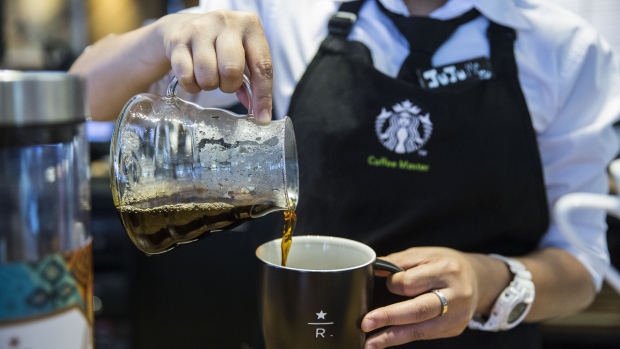Oct 9, 2018
Starbucks to chip in for U.S. baristas' babysitting costs
, Bloomberg News

After beefing up its parental leave policy this year, Starbucks Corp. (SBUX.O) will now offer subsidized childcare for all of its U.S. employees, too.
The new benefit, a partnership with childcare provider Care.com Inc., will provide 10 subsidized backup daycare days for parents for instances when regular care falls through. In-home backup childcare will cost US$1 an hour or US$2 an hour after the 4th child. Care at a daycare center will cost US$5 per day.
“We felt like it was important to make this accessible,” said Ron Crawford, vice president of benefits at Starbucks. “We wanted to have as low a possible cost.” Unlike some of Starbucks’s other benefits, which require employees to work 20 hours before they can access them, Care@Work is available to more than 180,000 U.S. employees, regardless of how much they work.
Americans pay almost as much for childcare as they do for rent, and when it falls through or there’s an unexpected day off from school or daycare, a parent either has to stay home or scramble to find a solution.
Subsidized childcare is a rare benefit. Only 2 per cent of more than 3,000 employers surveyed by the Society of Human Resource Management in 2018 say they help employees pay for childcare fees. Only 4 percent offer backup child care services.
Retailers and restaurants have been trying to improve their perks to retain employees amid a very tight labor market. Amazon.com Inc. (AMZN.O) just announced it’s boosting wages to US$15 an hour in November for its current and seasonal workers. In January, Starbucks committed to spend $250 million on new employee benefits, including a pay boost for domestic workers after the federal tax overhaul.
Sick Leave
In addition to reworking its paid parental leave program, Starbucks updated its sick leave policy this summer. Care@Work also provides backup services for workers who care for elderly family members. Over the last few years, employers have also started offering more benefits for employees to care for their sick and aging relatives, as millennials, the largest share of the work force, begin caring for their aging boomer parents.
Benefits that make it easier to juggle work and parenting can help employers keep working parents from jumping ship. Patagonia has claimed that it has 25 per cent lower turnover with employees who put their kids in an on-site daycare program. As the labor market has tightened, more companies have started offering paid parental leave.
For Starbucks, childcare is the next frontier. The company may be open to broader based childcare benefits in the future, too, Crawford said.
“This is a need we see in America today,” Crawford said. “Working parents need support for those days when stuff happens.”



